Kuala Lumpur, Malaysia | July 5-7, 2023


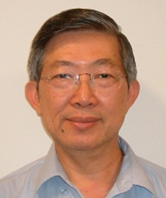
Prof. Kok Lay Teo
John Curtin Distinguished Emeritus Professor, Curtin University,
Australia
Professor and Associate Dean (Research & Postgraduate Studies),
Sunway University, Malaysia
Academician of The International Academy for Systems and Cybernetic
Sciences (IASCYS)
a Fellow of the Asian-Pacific Artificial Intelligent Association (AAIA)
a Fellow of The Australian Mathematical Society (AustMS)
a Senior Member of IEEE (Life)
Professor Teo received his Ph.D. degree in Electrical
Engineering from the University of Ottawa, Canada. He is a John Curtin
Distinguished Emeritus Professor at Curtin University, Australia, and a
Professor and Associate Dean (Research & Postgraduate Studies) at the
School of Mathematical Sciences, Sunway University, Malaysia. He is an
Academician of The International Academy for Systems and Cybernetic
Sciences (IASCYS), a Fellow of the Asian-Pacific Artificial Intelligent
Association (AAIA), a Fellow of The Australian Mathematical Society
(AustMS), and a Senior Member of IEEE (Life). He was with the Department
of Applied Mathematics, University of New South Wales, Australia, the
Department of Industrial and Systems Engineering, National University of
Singapore, Singapore, the Department of Mathematics, the University of
Western Australia, Australia, and the Department of Mathematics and
Statistics, Curtin University, Australia. He then took up the position
of Chair Professor of Applied Mathematics and Head of the Department of
Applied Mathematics at the Hong Kong Polytechnic University from
December 1998 to December 2004. He returned to Curtin University as a
Professor of Applied Mathematica and Head of the Department of
Mathematics and Statistics from January 2005 to December 2010. He was
John Curtin Distinguished Professor at Curtin University from January
2011 until his retirement in November 2019. He is now John Curtin
Distinguished Emeritus Professor at Curtin University.
He was a member of the Australian Research Council’s (ARC) Mathematical,
Information, and Computing Sciences Research Evaluation Committee for
the 2010 and 2015 rounds of Excellence in Research for Australia (ERA).
Professor Teo has published 6 books and over 550 SCI-listed journal
papers. Details of his latest book are: Kok Lay Teo, Bin Li, Changjun Yu
and Volker Rehbock, Applied and Computational Optimal Control: A Control
Parameterization Approach, Springer Optimization and Its Application
171, 2021. He has a software package, MISER3.3, for solving constrained
optimal control problems. His current editorial positions include
serving as Editor-in-Chief of the Journal of Industrial and Management
Optimization; and as a member of the editorial board of several journals
such as Automatica, Journal of Global Optimization, Journal of
Optimization Theory and Applications, Optimization and Engineering,
Discrete and Continuous Dynamic Systems, Optimization Letters, and
Applied Mathematical Modelling. His research interests include
theoretical and computational aspects of optimal control and
optimization, and their practical applications, such as in signal
processing in telecommunications, process control, and industrial and
management optimization.
Speech Title: Optimal Control Computation for
Nonlinear Switched Systems
Abstract: Switched systems operate by switching among various
modes or subsystems. This talk considers optimal control problems
governed by nonlinear switched systems in which the mode dynamics are
described by nonlinear differential equations. A computational method
for computing the optimal control for this optimal control problem is
presented. This computational method is based on some key ideas in
optimal control computation, which include control parameterization,
time-scaling transformation, and the constraint transcription method.
Two real-world practical examples are discussed.
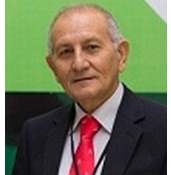
Prof. Haydar Akca
Abu DhabiUniversity, UAE
Haydar Akca graduated in Mathematics and Astronomy from Ege University,
Faculty of Science, Izmir, Turkey in 1970. Dr. Akca received Ph. D. in
Applied Mathematics from Inonu University, Malatya with collaboration
Helsinki University of Technology in 1983. Since then, he has been
teaching in various universities. He becomes Professor in Applied
Mathematics at Akdeniz University, Antalya in 1996. He has around 100
technical publications including monographs. His research interest area
primarily functional differential equations, neural networks,
mathematical modelling, control theory, and wavelet neural networks. He
has been organizing the serial International Conference on Dynamical
Systems and Applications. Dr. Akca is a member of a number of
professional mathematical associations. He is the Editor –in-Chief and
Editorial Board Member of number of International Mathematical Journals.
At present he is Professor of Applied Mathematics at Abu Dhabi
University, College of Arts and Science Department of Applied Sciences
and Mathematics, Abu Dhabi, United Arab Emirates.
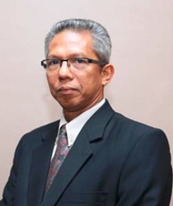
Prof. Dr. Lazim Abdullah
Universiti Malaysia Terengganu, Malaysia
Lazim Abdullah is a Professor of Computational Mathematics at the Faculty of Ocean Engineering Technology and Informatics, Universiti Malaysia Terengganu. He obtained his first degree from University of Malaya, in June 1984 and a master’s degree from the Universiti Sains Malaysia in 1999. He received his Ph.D from the Universiti Malaysia Terengganu, in 2004. His research and expertise focuses on fuzzy set theory of mathematics, decision making, applied statistics, and their applications to social ecology, environment, health sciences and management. His research findings have been published in more than 360 publications including refereed journals, conference proceedings, chapters in book, monographs, and textbooks. He was ranked among the world’s top 2% scientists for single year 2019 by Stanford University in the field of artificial intelligence and image processing. Currently, he is the Head of Data and Digital Sciences Research Cluster at the Universiti Malaysia Terengganu. Prof Lazim is a member of the IEEE Computational Intelligence Society, and a member of International Society on Multiple Criteria Decision Making.
Speech Title:Developing interval type-2 fuzzy
moving average control charts
Abstract: Previous literature suggests that fuzzy control charts
are more sensitive than conventional one hence, it provides better
quality and conformance of products. However, it is known that much of
the data used in the manufacturing sector cannot be expressed by type-1
fuzzy numbers and some of it is more suitable to be expressed in type-2
fuzzy numbers. This paper aims to develop interval type-2 fuzzy moving
average (IT2F-MA) control charts by incorporating interval type 2
trapezoidal fuzzy numbers as input data for the case of known and
unknown standard deviations. To verify the performance of the proposed
control chart, normal distribution based-average run length (ARL) was
computed and compared to type-1 fuzzy MA charts and conventional MA
charts. Twenty samples with a sample size of six of fertilisers’
production were examined to identify the defects. Based on the
conventional MA chart, 8 out of 20 samples were “out of control”. On the
other hand, the type-1 fuzzy MA chart found 10 defects, whereas the
interval type-2 fuzzy MA chart found 15 samples to be defectives. Thus,
we can conclude that interval type-2 fuzzy chart is more sensitive and
takes a lesser number of observations to identify the shift in the
process. In addition, the ARL test showed that interval type-2 fuzzy MA
outperformed the other control charts under the comparison of ARL. The
ability is attributed to the introduction of interval type-2 fuzzy
numbers to the MA and the explicit formula of ARL where the quality of
fertilisers production can be improved.
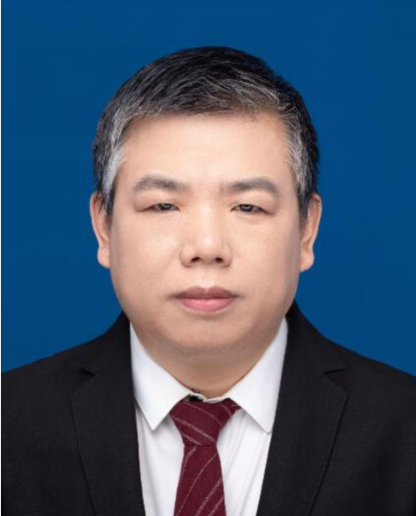
Prof. Xiaojun Yang(杨小军)
State Key Laboratory for Geo-Mechanics and Deep Underground
Engineering, and School of Mathematics, China University of Mining and
Technology, Xuzhou, China
Department of Mathematics, Faculty of Science, King Abdulaziz
University, Jeddah, Saudi Arabia
Department of Mathematics, College of Science, Kyung Hee University,
Seoul, Republic of Korea
Dr. Xiao-Jun Yang, a full Professor of Applied Mathematics and Mechanics, at State Key Laboratory for Geomechanics and Deep Underground Engineering, China University of Mining and Technology, China. His scientific interests include Mathematical Physics, Fractional Calculus and Applications, Fractals, Mechanics, Number Theory, Integral Transforms and Special Functions. He is a distinguished scientist in King Abdulaziz University (KAU, Saudi Arabia) and eminent scholar in Kyung Hee Univeristy (KHU, Republic of Korea). He has received 2022 Obada Prize for Distinguished Scientist (Egypt, 2022), Atanasije Stojkovič Medal (Serbia, 2021), Abel Award for Young Scientist (Turkey, 2020), Clarivate Analytics [Thomson-Reuters] (Web of Science) Highly Cited Researcher in Mathematics, et al.
Speech Title: A New Challenge in the Field of
Mathematics
Abstract: The main purpose of the report is to suggest an entire
function associated with the completed Riemann zeta function. The entire
function on the critical line is expressed by the Fourier cosine
integral. Compared with the Riemann hypothesis, it is showed that a
hypothesis is that its zeros have the real part equal to 0.5. This is a
new challenge in the field of mathematics showed in the Fractals
Challenge of the journal Fractals.
Prof. Lukasz T. Stepien
The Pedagogical University of Cracow, Poland
I was born in 1975, in Kraków (Poland), and I was studying physics at
the Jagiellonian University (Kraków) in 1994 - 1999, I graduated in 1999
(Master thesis: „Some examples of dynamics of certain domain walls”). In
2003 I gained PhD (PhD thesis: “Bogomolny decomposition in the context
of the concept of strong necessary conditions”). In 2004 I finished the
postgraduate studies “Software engineering” at The AGH University of
Kraków. I have been working at The Pedagogical University of Cracow,
since 2004. My scientific activities: theoretical physics, applied
mathematics, mathematical logic, foundations of mathematics.

Assoc. Prof. Liu Mei Feng
Xiamen University Malaysia
Dr. Mei-Feng Liu is an Associate Professor of Department of Mathematics at Xiamen University Malaysia (XMUM) in Selangor, Malaysia. She received her Ph.D. in Applied Mathematics from the Chung-Hsing University at Taichung, Taiwan R.O.C. in 2001. She joined to the Department of Applied Mathematics at I-Shou University at Kaohsiung, Taiwan in 2001 as an Assistant Professor and then promoted to Associate Professor in 2005. She retired from I-Shou University and joined the Xiamen University Malaysia in 2017. Her scientific interests include Mathematical Modelling, Composite Material, Vibration Analysis, Scientific Computation.
Abstract: New governing equation for the transverse vibration of fully coupled thermo-magneto-electro-elastic (TMEE) thin laminates accounting for entropy constitutive equation is derived in this paper. In particular, free vibration for the bi-layered BaTiO3-CoFe2O4 composite and the three-layered laminate made of CoFe2O4 / BaTiO3 stacked on elastic Epoxy are implemented as demonstration examples. Complete constitutive equations regarding the elastic stresses, electric displacements, magnetic fluxes as well as the entropy of the thermodynamic system are revisited, their corresponding alternative forms are further introduced so that Navier elastic equation, the Gauss’ laws in the absence of free charges and currents, and the steady-state heat equation can be applied. Based on the Kirchhoff thin plate theory in accordance with the non-zero out-of-plane field assumptions, bending problem for the transversely isotropic TMEE rectangular plates is investigated, governing equation in terms of the transverse displacement is then presented in a rather compact form. The effective material coefficients for the TMEE laminate are presented and expressed via the volume fraction (vf) of either the piezoelectric phase constituent or the piezomagnetic phase constituent. Natural frequencies of the proposed TMEE coupling thin plates are analytically evaluated, and the effects of different volume fraction on the natural frequency are discussed; in addition, the existence of elastic substrate Epoxy and its effect are further investigated.
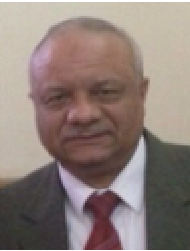
Prof. Hesham Elkaranshawy
Alexandria University, Egypt
He received his BSc degree (distinction with degree of honor) in mechanical power engineering and MSc degree in Engineering Mathematics from Alexandria University, Alexandria, Egypt, in 1983 and 1988 respectively. He received his PhD degree in Mechanical Engineering from McMaster University, Hamilton, Ontario, Canada, in 1995. During 1995-1996 he joined CAE Electronics, Montreal, Canada, as a finite element specialist where he involved in design of the company’s flight simulators and in its role in the world space station project. He became an assistant professor at Department of Engineering Mathematics and Physics, Alexandria University in 1996. In 1998 he established Dynamica Engineering Consultants, Giza, Egypt. In 2001, Dr. Elkaranshawy became an assistant professor at Department of Mechanical Engineering, Yanbu Industrial College, Royal Commission for Jubail and Yanbu, Saudi Arabia. Since 2010 he went back to Alexandria University, and he is now a professor at Department of Engineering Mathematics and Physics. He was a board member of the Egyptian Syndicate for Engineers in Behera province. He published about forty scientific papers, which can be seen in Google scholar: https://scholar.google.com/citations?user=mKVrJ44AAAAJ&hl=en, most of them are in internationally respected journals. His research interests include multibody dynamics, robot dynamics, contact-impact dynamics, finite element modeling, wave propagation, fault detection, and nonlinear systems. Most of his current research is in the field of mathematical biology. Some interesting subjects have been investigating in cardiology, neurodynamics, kinesiology, tumor-immune interaction, and hepatitis C virus infection.
Speakers in 2022

Prof. Abdalah Mohamad Rababah,

Jordan University of Science and
Technology, Jordan

Prof. Mohammed K. A. Kaabar,
University of Malaya, Malaysia
Prof. Mohammed K A Kaabar received all his undergraduate and graduate degrees in Mathematics from Washington State University (WSU), Pullman, WA, USA. Kaabar has a global diverse experience in teaching and has worked as Adjunct Full Professor of Mathematics, Math Lab Instructor, and Lecturer at various US institutions such as Moreno Valley College, California, USA, Washington State University, Washington, USA, and Colorado Early Colleges, Colorado, USA. He authored two math textbooks, and he is an invited referee for more than 300 Science, Technology, Engineering, and Mathematics (STEM) international conferences all over the world. He served as an editor for the American Mathematical Society (AMS) Graduate Student Blog, and he is also a full editor for an educational program (Mathematics and Statistics Section) at California State University, Long Beach, CA, USA. Kaabar is also currently serving as an editor for 21 international scientific journals in applied mathematics and engineering.
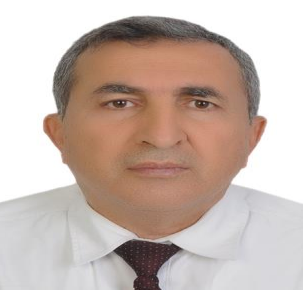
Prof. F.Talay Akyildiz,
Imam Mohammed
Ibn Saud Islamic University, KSA
Dr. Fahir Talay Akyildiz is a
Professor of applied mathematics at Imam Mohammad Ibn Saud Islamic
University (IMSIU) in Riyadh, Kingdom of Saudi Arabia. He obtained
his undergraduate degree in Mathematics (1983) from Ankara
University in Ankara/Turkey and Master degree in Pure mathematics
(1988) from Ondokuz Mayis University in Samsun/Turkey. Professor
Akyildiz received his Ph.D. in Applied Mathematics from the
University of Cardiff at Aberystwyth /United Kingdom in 1992 under
the supervision of the late Ken Walters (FRS). He was appointed to
the Department of Mathematics at Ondokuz Mayis University in 1993 as
an Assistant Professor. He was then promoted to Associate Professor.
Dr. Fuaada Binti Mohd Siam, 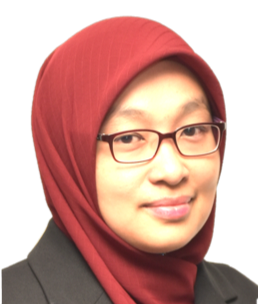
University Teknologi Malaysia(UTM),
Malaysia
Fuaada is a Senior Lecturer in the
Department of Mathematical Sciences, Faculty of Science, University
Teknologi Malaysia (UTM), Malaysia. She joined Universiti Teknologi
Malaysia in 2001, just after completing her degree in Industrial
Mathematics from Universiti Teknologi Malaysia the same year. In
2003, she served as a lecturer in the department. She completed her
Master’s degree in Mathematics from the same university in 2003. In
2014, Fuaada received her PhD in Mathematics from the University of
Strathclyde, Scotland, UK.